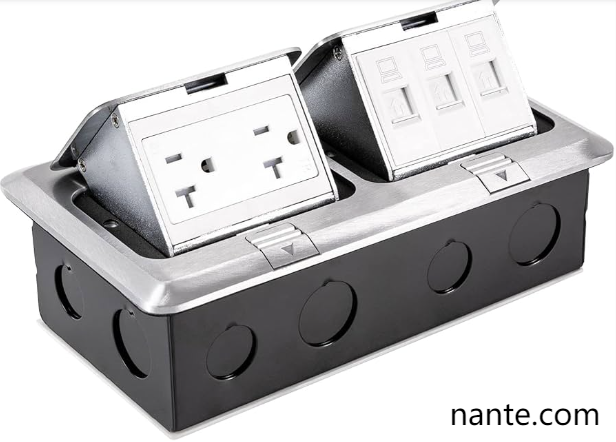When remodeling a living area or rethinking a home office layout, an Electrical Socket Box can become more than a functional detail; it can help organize cables, protect devices, and support clean decor choices. As households juggle multiple monitors, chargers, and smart gadgets, treating an outlet node with care reduces hazards and keeps daily routines flowing. The right approach to labeling and arranging multiple enclosures around a property makes life easier for everyone who plugs in.
Start by mapping needs. Walk each room and note where devices actually sit during normal use. Group outlets that serve media centers, study areas, and kitchen counters so equipment shares protective circuits rather than relying on single runs. Using simple tags or color coded markers clarifies which outlet feeds which device and prevents accidental overload when many items draw current at the same time. This step also helps identify where a dedicated line or additional protective module might be warranted.
Labeling practices matter. Choose durable tags that resist fading and stick to a consistent format across the house. Short phrases that state location and function cut confusion during maintenance and make it quicker to isolate a circuit if a protective device trips. For hidden nodes such as cabinet mounted enclosures place a matching label on the inside of the door so anyone opening it sees the same reference used on the breaker panel. Consistency reduces mistakes when guests or service staff need to disconnect equipment.
Cable routing turns a jumble into an asset. Use discrete trunking or slim raceways behind furniture to keep cords out of sight while preserving access. Velcro straps and removable ties secure runs without damaging jackets and allow reconfiguration as needs change. Where runs cross floors consider low profile covers that protect cables and reduce trip hazards. For outdoor power points choose rated gland plates and sealed entries so wiring remains protected from moisture while the route remains tidy.
A central log helps long term upkeep. Create a simple record listing each enclosure location, labeled circuits, and installed protections. Note date of last inspection and any spare parts carried for fast repair. When equipment changes hands the log passes with the property and keeps successor owners from guessing about past fixes. For households with caretakers or frequent contractors the log simplifies communications and speeds safe problem solving.
Smart labeling pairs with metering and monitoring where possible. Small plug in meters show which outlets draw the most current and for how long. This data drives choices such as moving a heavy load to a dedicated feed or staggering start times for tools and appliances. With clear labels in place the metrics attach to an identified node instead of a nameless socket, making adjustments straightforward.
Safety steps complement organization. Place visible isolation instructions near nodes that supply high draw devices and include a short note about how to switch off power safely. Protect children with decorative covers that lock and still allow adults swift access. For outdoor setups ensure covers latch securely and that connections sit behind rated enclosures or within shallow recesses to avoid accidental wetting.
Think about redundancy and spare capacity. When many devices cluster in one room a spare outlet or a small distribution node near the usage point eliminates long extension runs and reduces heat near connectors. Balance convenience with protection by using modules that include overload sensing and resettable breakers so a single surge does not black out an entire area.
Maintenance routines keep the system reliable. Periodic checks for warm terminals, loose screws, or brittle insulation prevent small faults from turning into service interruptions. Document any findings in the central log and replace worn seals and ties as needed. Keeping a small kit of spare labels, gland seals, and common fasteners in a labeled box saves time when a quick repair is needed.
Aesthetic options let hardware blend with design. Choose faceplates and trim that echo wall finishes, or hide a shallow enclosure within a piece of furniture while providing a removable panel for access. For media walls recess outlets into cabinets and route power behind shelving so displays look neat and connections stay organized. When remodeling, plan outlet heights and groupings to match furniture placement rather than retrofitting after the fact.
Finally, involve household members in a simple orientation. Show where labeled nodes sit and explain the log so everyone knows how to switch off a device during an outage or move a high draw tool to a different circuit. Clear communication keeps the arrangement useful and preserves safety when routines shift.
For homeowners seeking configurable units and accessories that support tidy installation and clear labeling, explore product ranges and installation notes to match an enclosure to each room purpose. Detailed accessory lists and mounting guidance are available at www.nante.com/product/ , where planners can find compatible faceplates, gland kits, and service tips to help implement a neat, safe, and easy to maintain outlet network across a house. The resources there assist in choosing the right components and preparing a simple maintenance plan that helps keep systems running smoothly.
